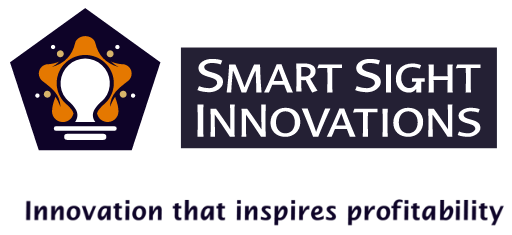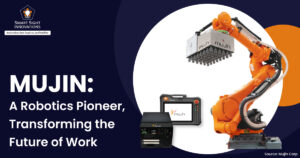
IoT in Manufacturing
In the context of manufacturing, IoT involves integrating sensors, devices, and systems to create a connected ecosystem that can monitor and manage industrial operations in real-time. This technological advancement allows for enhanced communication between machinery, improving operational efficiency and productivity.
IoT devices can range from simple sensors that monitor temperature and humidity to complex systems that control entire production lines. These devices collect vast amounts of data, which can be analyzed to gain insights into various aspects of the manufacturing process, such as equipment performance, energy consumption, and production output.

As of 2023, the global IoT in manufacturing market size is valued at approximately $200 billion and is projected to reach around $450 billion by 2028, growing at a compound annual growth rate (CAGR) of 18%. Key sectors such as automotive, electronics, and pharmaceuticals are leveraging IoT to optimize production processes, reduce downtime, and improve quality control.
IoT Devices in Manufacturing
IoT devices in manufacturing are instrumental in transforming traditional factories into smart, connected environments. These devices range from simple sensors to complex systems, each playing a critical role in optimizing various aspects of the production process. Here are some key types of IoT devices commonly used in manufacturing:

1. Sensors
- Temperature and Humidity Sensors
Monitor environmental conditions to ensure optimal settings for machinery and product quality.
- Vibration Sensors
Detects abnormal vibrations in machinery, indicating potential mechanical issues that need attention.
- Pressure Sensors
Measure and monitor the pressure in equipment and pipelines to ensure safe and efficient operations.
2. RFID Tags and Readers
These are used for tracking inventory and assets in real-time. These devices help in managing stock levels, reducing losses, and streamlining supply chain operations.
3. Smart Meters
They measure and monitor energy consumption of machines and systems. This data helps in identifying energy-saving opportunities and reducing operational costs.
4. Cameras and Vision Systems
Cameras are used for quality control by inspecting products for defects and ensuring they meet specifications. Vision systems can also monitor production lines for efficiency and safety.
5. Programmable Logic Controllers (PLCs)
PLCs control and automate manufacturing processes by receiving data from sensors and other devices to make real-time adjustments to machinery and workflows.
6. Industrial Robots
Integrated with IoT capabilities, these robots can perform complex tasks with high precision and flexibility. They can also communicate with other devices to coordinate activities and optimize production lines.
7. Wearable Devices
Used by workers to monitor their health and safety conditions, wearable devices can track physical strain, exposure to harmful substances, and provide alerts in case of emergencies.
8. Connected PLCs and SCADA Systems
These systems control and monitor industrial processes. With IoT integration, they offer advanced data analytics, remote monitoring, and enhanced process control.
9. Edge Devices
Edge devices process data at the edge of the network, close to the source of data generation. This reduces latency and enables real-time decision-making.
10. 3D Printers
Used for rapid prototyping and production of custom parts, the IoT-enabled 3D printers can be monitored and controlled remotely, optimizing their operation and maintenance.
By integrating these IoT devices into their operations, manufacturers can achieve higher levels of efficiency, reduce downtime, improve product quality, and enhance overall productivity. These devices provide valuable data and insights, enabling manufacturers to make informed decisions and stay competitive in the market.
Common Causes of Downtime
Understanding the causes of downtime is crucial for implementing effective strategies to minimize disruptions and maintain efficient manufacturing operations. Some common causes are:

-
Mechanical Failures
Mechanical issues are one of the leading causes of both planned and unplanned downtime. These failures can result from wear and tear, lack of maintenance, or component defects. Periodic maintenance and monitoring can help mitigate these risks.
-
Electrical Failures
Electrical issues, such as power outages, faulty wiring, or component failures, can cause significant disruptions in manufacturing operations. Implementing robust electrical systems and backup power solutions can reduce the impact of electrical failures.
-
Human Errors
Operator mistakes, incorrect machine settings, or procedural errors can lead to downtime. Comprehensive training programs and standardized operating procedures can help minimize human errors.
-
Supply Chain Issues
Delays in the supply of raw materials or components can halt production. Effective supply chain management and maintaining adequate inventory levels are crucial to prevent such disruptions.
-
Quality Control Issues
Production stoppages can occur when products fail to meet quality standards, requiring rework or scrapping. Implementing real-time quality monitoring and control systems can help detect and address issues early.
-
Environmental Factors
Factors such as extreme weather conditions, natural disasters, or hazardous material incidents can disrupt manufacturing operations. Having contingency plans and robust safety protocols in place can mitigate these risks.
-
Software and IT Failures
Failures in manufacturing execution systems (MES), enterprise resource planning (ERP) systems, or other critical software can lead to downtime. Regular software updates, backups, and cybersecurity measures are essential to prevent such incidents.
Importance of Minimizing Downtime in Manufacturing
Minimizing downtime in manufacturing is critical for the following reasons:

1. Cost Reduction
Downtime, whether planned or unplanned, directly impacts the financial health of a manufacturing operation. When production halts, the costs associated with idle labor, wasted materials, and lost production time can accumulate rapidly. By minimizing downtime, manufacturers can significantly reduce these expenses, thereby enhancing overall profitability.
2. Maximized Productivity
Efficient manufacturing relies on the smooth and continuous operation of machinery and processes. Downtime leads to delays and decreased output. Minimizing downtime ensures that production lines run consistently, maximizing throughput and meeting production targets.
3. Enhanced Equipment Longevity
Frequent stops and starts can accelerate wear and tear on manufacturing equipment, reducing its lifespan and increasing maintenance costs. By minimizing downtime and implementing predictive maintenance strategies through IoT, manufacturers can maintain equipment in optimal condition, extending its useful life and reducing the frequency and cost of repairs.
4. Improved Product Quality
Downtime can interfere with quality control measures, leading to defects and inconsistencies in the final product. Maintaining continuous production helps ensure that quality control protocols are applied consistently, resulting in higher-quality products and reducing the incidence of rework or scrapping defective items.
5. Meeting Customer Demands
In today’s fast-paced market, meeting customer demands promptly is critical. Downtime can lead to delays in fulfilling orders, damaging customer relationships and potentially leading to lost business. By minimizing downtime, manufacturers can ensure timely delivery of products, enhancing customer satisfaction and loyalty.
6. Optimized Resource Utilization
Manufacturing operations involve significant investments in labor, materials, and machinery. Downtime leads to inefficient use of these resources. By reducing downtime, manufacturers can optimize resource utilization, ensuring that labor and materials are used effectively and that machinery operates at its full potential.
7. Competitive Advantage
In a competitive market, operational efficiency can be a significant differentiator. Companies that can minimize downtime and maintain continuous production are better positioned to innovate, respond to market changes, and deliver products faster than their competitors. Gaining a competitive advantage can boost market share and company expansion.
8. Energy Efficiency
Continuous operation allows for better management of energy consumption. Frequent start-stop cycles can lead to energy spikes and increased consumption. By maintaining steady production, manufacturers can implement more efficient energy management strategies, reducing costs and supporting sustainability goals.
Predictive Maintenance and IoT
Predictive maintenance, powered by IoT, is revolutionizing how manufacturing plants manage their equipment and operations. Unlike traditional maintenance approaches, which are either reactive (fixing equipment after it fails) or preventive (servicing equipment based on scheduled intervals), predictive maintenance leverages real-time data and advanced analytics to predict when equipment is likely to fail. This proactive strategy minimizes downtime, reduces costs, and optimizes overall efficiency.

Sensors attached to machinery continuously monitor critical parameters such as temperature, vibration, pressure, and humidity. This data is transmitted in real-time to cloud-based platforms or edge devices, where it is analyzed using machine learning algorithms. These algorithms detect patterns and anomalies, predicting potential failures before they occur.
For example, vibration sensors on rotating equipment can identify early signs of imbalance or misalignment. Temperature sensors can detect overheating, which may indicate wear or lubrication issues. By addressing these signs promptly, manufacturers can prevent unexpected breakdowns and extend the lifespan of their machinery.
Predictive maintenance combined with IoT is transforming manufacturing operations by reducing downtime, improving efficiency, and ensuring reliability. It represents a vital step toward smarter, more connected factories.
Real-Time Monitoring and Analytics
Real-time monitoring and analytics are revolutionizing the manufacturing industry by providing actionable insights into operations as they happen. Leveraging advanced technologies such as IoT devices, edge computing, and AI-powered analytics, real-time systems empower manufacturers to optimize processes, minimize downtime, and enhance productivity.

Real-time monitoring involves the continuous collection and transmission of data from machinery, systems, and processes in a manufacturing facility. IoT sensors and connected devices gather this data, which is then analyzed instantly using advanced algorithms. Real-time analytics interprets the data, identifying trends, anomalies, and actionable insights to support quick decision-making.
For instance, sensors on a production line can measure parameters such as temperature, vibration, and speed. Real-time analytics processes this data to detect deviations, allowing operators to address issues before they impact production.
The integration of 5G connectivity, digital twins, and AI-driven automation will further enhance the capabilities of real-time systems. These advancements will enable faster, more accurate decision-making and unlock new opportunities for smart manufacturing.
Supply Chain Optimization with IoT
The integration of the IoT into supply chain management is revolutionizing how businesses handle logistics, inventory, and operations. IoT technologies enable real-time monitoring, seamless communication, and data-driven decision-making, driving efficiency and reducing costs across the supply chain. This enhanced visibility and control help manufacturers and suppliers meet customer demands while maintaining a competitive edge.

IoT in supply chain optimization refers to the use of connected devices, sensors, and platforms to monitor and manage every aspect of the supply chain. IoT enables real-time data collection and analysis, offering insights into the movement of goods, inventory levels, equipment status, and environmental conditions.
Energy Management and IoT
Effective energy management is critical for modern manufacturing plants striving to reduce operational costs and meet sustainability goals. The integration of the IoT into energy management systems is revolutionizing how factories monitor, control, and optimize energy use. By leveraging IoT technology, manufacturers can enhance efficiency, minimize waste, and reduce environmental impact.

IoT-enabled energy management involves using connected devices and sensors to monitor energy consumption in real time, analyze usage patterns, and implement automated controls to optimize energy efficiency. These systems provide actionable insights, enabling manufacturers to make informed decisions about energy utilization and cost-saving measures.
Automation and IoT
The integration of automation and the IoT is transforming the manufacturing sector, driving unparalleled efficiency, productivity, and innovation. This dynamic duo empowers manufacturers to automate processes, optimize operations, and create smarter, more agile factories.

Automation in IoT refers to the use of connected devices, sensors, and systems to automate tasks and workflows within a manufacturing environment. By leveraging IoT, automation goes beyond traditional programming, incorporating real-time data, machine learning, and advanced analytics to make intelligent decisions and respond dynamically to changing conditions.
Future Trends in IoT for Manufacturing
The impact of IoT on the manufacturing industry is set to deepen as new technologies and innovations emerge. Here are the key future trends shaping IoT in manufacturing:

1. Edge Computing for Real-Time Decision-Making
Edge computing is becoming increasingly critical in IoT-enabled manufacturing. By processing data locally on devices or at the edge of the network, manufacturers can achieve real-time insights and actions without relying on cloud latency. This is especially beneficial for time-sensitive processes like quality control and predictive maintenance.
2. AI and Machine Learning(ML) Integration
The integration of AI and ML with IoT devices will revolutionize data analytics in manufacturing. AI algorithms can analyze vast amounts of IoT-generated data to identify patterns, optimize operations, and predict failures more accurately, leading to smarter decision-making.
3. Digital Twins for Enhanced Simulation
Digital twins are becoming more sophisticated with IoT. Manufacturers can use real-time data from IoT sensors to create accurate simulations of production lines, equipment, or entire facilities, enabling proactive maintenance, process optimization, and better planning.
4. Industrial IoT (IIoT) Ecosystem Expansion
The IIoT ecosystem will help promote interoperability, allowing manufacturers to integrate various IoT systems across their operations more effectively.
5. Predictive and Prescriptive Maintenance
While predictive maintenance is already widely used, prescriptive maintenance that uses IoT data and AI to recommend specific actions, will become more prevalent. This approach not only predicts when equipment will fail but also suggests how to prevent it, further reducing downtime.
6. Blockchain for IoT Security
Blockchain technology when integrated with IoT, enhances data security and transparency in manufacturing. It can help safeguard IoT data, track the provenance of materials, and ensure secure communication between devices.
7. Augmented Reality (AR) and Virtual Reality (VR) Applications
IoT data will increasingly power AR and VR applications in manufacturing. Workers can use AR devices to visualize machine health, overlay maintenance instructions, or train on virtual models, improving efficiency and reducing errors.
8. Human-Machine Collaboration
IoT will enhance collaboration between humans and machines by enabling better communication and coordination. For example, wearable IoT devices can provide workers with real-time insights into machinery status or safety alerts.














